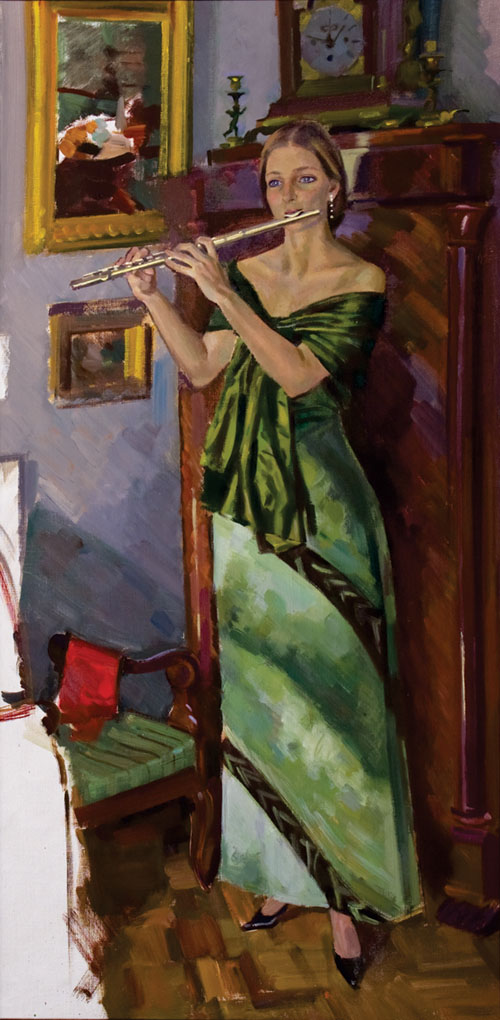Picturesque Symphony by Vitalii Kryzhanovsky
The old Kyiv how the famous Ukrainian artist knew it
In line with its traditions, the Kyiv History Museum bestowed upon its visitors an encounter with creative legacy of the master who reflected the history of an almost-forgotten by new era. The artist was born in a prominent Kyivan family of collectors Troadii and Tsetsylia Kryzhanovsky, who donated their collection to many domestic and foreign museums. Vitalii’s love for art and books was inherited from his parents, for the family’s atmosphere was one of high culture and deep reverence for history and antiquities. Many items on Kryzhanovsky’s interior paintings allow us to immerse ourselves in the atmosphere he was used to even today. Antique furniture and books, paintings and musical instruments, all full of delicate aristocratic charm, fill the paintings with nostalgia for what has been irreversibly lost. It sounds a barely audible melody of lives which he and his ancestors lived... and which are now going away into the shadows of the past.
Kryzhanovsky was born in Bila Tserkva in 1933. The family moved to Kyiv later. From 1949 till 1952, he studied under renowned artist Olena Yablonska, sister of classic Ukrainian artist Tetiana Yablonska. He went on to master the basics of art at Odesa Art School and completed his education under Vasyl Kasian, Serhii Poderviansky, Leonid Chychkan, and Oleksandr Pashchenko at Kyiv Art Institute.
Being independently-minded, the artist was able to try his hand in graphics and easel painting as well as book illustration. Starting in 1965, he organized four solo exhibitions and participated in many group ones. People who take an interest in the history of the capital these days will like finding out that Kryzhanovsky is known as the author of graphic series depicting Kyiv’s architectural landscapes and called “Shadows of the Past” and “The Interiors of Old Houses.”
Exhibition “Picturesque Symphony” allows visitors to see the inner world of the master, as reflected through the interior of his apartment: lush lilacs in an antique vase, antique lamp with candlestick, furniture in the style of the 19th and early 20th centuries, and many paintings on the walls, illuminated by rays of the morning sun… He painted this corner over and over again, sometimes focusing on An Easter Still Life or a lady engaged in amateurish music-making (A Home Concert). Obviously, this environment gave the artist inspiration, and this harmony strengthened his genetic roots.
The graphics are also interesting for any visitor: surely, only an accomplished realist artist can draw a regular shoe with untied laces so skillfully that the audience immediately recognizes it as a professional work. An evening porch, lighted from inside, was drawn by the master instantly, as a quick sketch, with a few bold strokes, and it looks as if inviting us inside, into a quiet environment of the house.
The exhibition aims to present the master from different perspectives: examples of cartoons and caricatures, which Kryzhanovsky created as satires on certain social character types, are displayed behind a glass window. Book covers designed by the artist take us to the second half of the 20th century, with exhibits including several books about the history of art cinema, Karl Neumann’s Frank and Irene and child development-centered textbooks for elementary school. Kryzhanovsky painted a lot of landscapes, both in a free, almost impressionistic manner (A Stebliv Landscape), and in a more restrained realistic manner. Portraits by him are mostly images of a narrow circle of close friends, but there are also a number of portraits of young people which were painted offhand.
Over his multi-year career, Kryzhanovsky left us a legacy of an entire era: not trying to reach for superfluous impressions and fashionable trends, he worked in a style close to his worldview. Most importantly, he managed to preserve for posterity our shared treasure which is called culture.
The exhibition will be open to the visitors until August 28.






